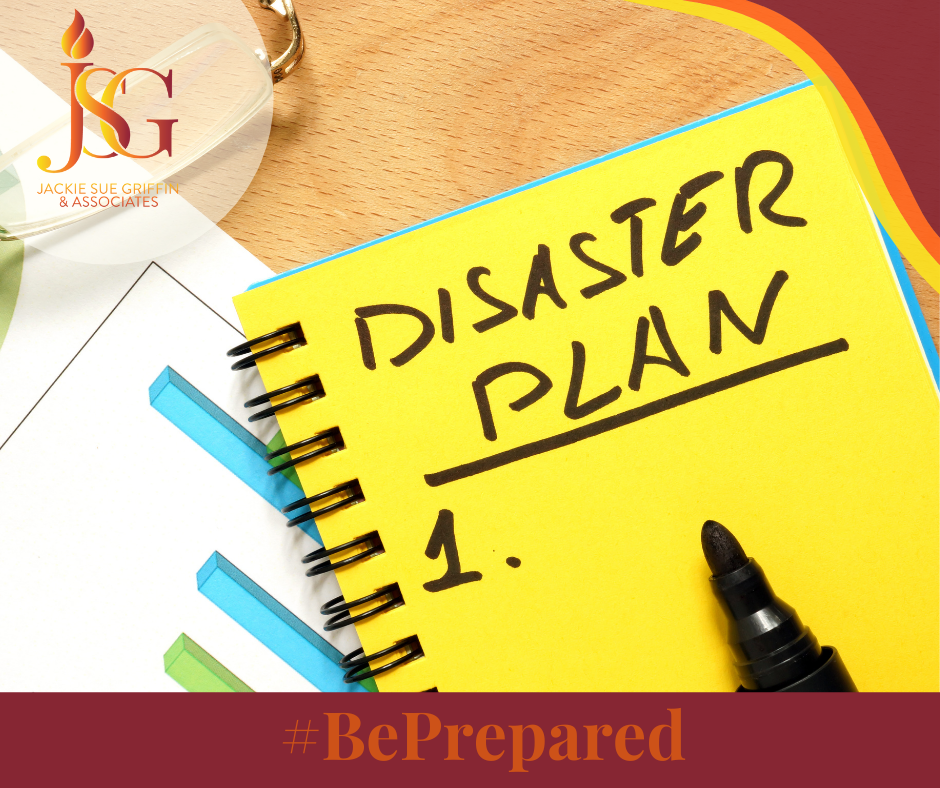03 Sep Preparing For a Natural Disaster

By Tiffany Rucker, MBA
If you’ve tuned into the news lately, you’ve seen the catastrophic damage that Hurricane Ida has caused throughout multiple states. Ida appeared just 16 years after Hurricane Katrina, which left significant devastation and caused many families to leave their homes behind and relocate to a different state. As rescue missions are in effect, flooding and power outages leave people in danger of severe illness or death. What makes this storm unique is that it touched down in the middle of a global pandemic caused by COVID-19.
In the past, shelters were available and accepted hundreds of people as they weathered the storm together. Unfortunately, congregating in large crowds is virtually impossible and potentially life threatening as the pandemic continues to wreak havoc on individuals and businesses. With new COVID-19 cases on the rise, even rescue efforts are different as first responders try to complete their missions while following COVID-19 safety protocols.
In the aftermath of a natural disaster, it’s often asked why the people did not “just leave” when they heard about danger coming their way. The truth is that it is not that simple to pick up and leave if you’re not prepared. And preparation is more than being aware that the storm is coming. It’s about the steps that one must take to be able to leave safely. Here are a few tips to help you be ready for the next major event:
- Create an Emergency Fund. One of the main reasons people cannot just pick up and leave immediately is because they do not have the funds to do so. Our recommendation is to have three to six months of your monthly expenses saved for an emergency such as an A/C repair or auto repair. However, when planning for a natural disaster, it’s best to have six to nine months of your monthly expenses saved. For example, if your monthly expenses total $3,000, you’ll need at least $27,000 saved should a natural disaster occur. Place these funds in an account that you cannot easily access. (You are less likely to spend the money if it’s not easy to withdraw them.) As reports of a natural disaster coming your way begin, you’ll be able to go to your financial institution and withdraw the funds needed for evacuation.
- Make an Evacuation Plan. Having a plan in place BEFORE disaster strikes can make the transition smooth. Know where you can go for shelter. One of the most common challenges is finding a shelter that accepts pets. Research this topic beforehand so that pets are included in your evacuation procedures. Make sure that everyone in the family is aware of the plans. One thing that people do is try to “protect” children from the disasters going on around them. It’s important to remember that anytime a disaster strikes, children are impacted as well and deserve to know the next move.
- Create an Evacuation Bag or Container. It’s hard to say goodbye to all the things that make up your home, especially if you do so in a hurry. Creating an evacuation bag or container can help you safely transport and store important documents if you must leave abruptly. Some of the things you should include are Social Security cards, birth and marriage certificates, mortgage/rental agreements, insurance documents (home, auto, life and health) and your child’s last report card, to name a few. Having these documents on hand can make your transition easier if a disaster forces you to relocate permanently.
Between the pandemic and Hurricane Ida, the individuals and families affected are faced with a tremendous amount of stress and mental anguish. It’s important to be mindful that the people who stayed during Hurricane Ida and now need our support may not have had any other option.
And that’s why preparation is key to survival.

Tiffany Rucker is a small business and financial literacy coach as well as wife, mom and special needs advocate. She lives in Tampa, Fla.

No Comments